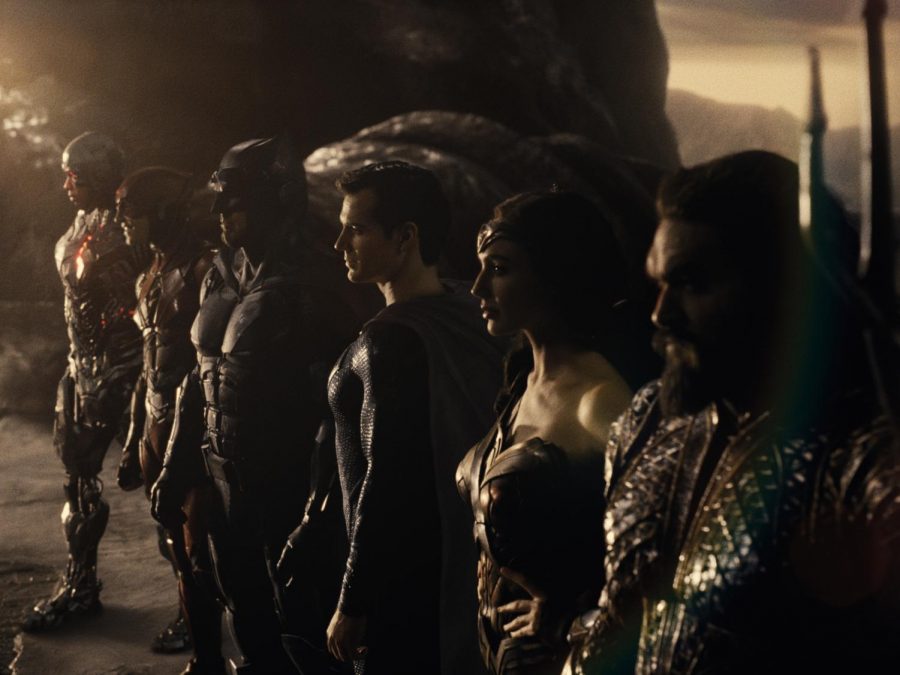Acclaimed science fiction action film director, producer and screenwriter Zack Snyder’s directorial version of DC’s 2017’s Justice League, The Snyder Cut was released on March 18, 2021, through the HBO Max streaming platform.
Zack Snyder’s Justice League, dubbed the Snyder cut by fans, released straight to streaming after four years of industry and fan outcry. The original version of DC’s Justice League, released in 2017, went through numerous changes after Snyder left the production of the film following the death of his daughter. Joss Whedon, best known for creating Buffy the Vampire Slayer and co-writing 1995’s Toy Story, took control of the film and oversaw reshoots that saw the script change to fit a lighter and more humorous tone while cutting down the runtime. The movie received not-so-positive reviews, only managing to earn a 40% on popular film review site Rotten Tomatoes, while also bombing at the box office.
The DC Extended Universe, or DCEU for short, has been seen as the little brother franchise to the more popular interconnected film franchise, the Marvel Cinematic Universe. Especially after the disappointment that was 2017’s Justice League, as well as the mixed reviews given to previous films like 2016’s Batman v Superman: Dawn of Justice and Suicide Squad, the DCEU has put itself into a hole its been attempting to claw itself out of for the last few years.
Snyder’s version entirely reimagines Justice League to match his original vision of the film he saw when originally writing the script. Gaping holes in the 2017 version of the film brought on by the movie being shortened to appeal to wider audiences were clearly on Snyder’s mind to fix in The Snyder Cut, and he definitely took his time filling them. The Snyder Cut is double the length of the original version of the movie, as the two, yes two, outros and end credits leave the movie being 4 hours and 2 minutes long.
Looking at the gargantuan runtime of the movie may be daunting for viewers wanting to settle in and just see the Justice League fight some aliens, but it ends up being perfect for the digital streaming age. The movie is broken up into 6 parts and an epilogue, each having names and keeping specific plot points and plot progression in mind, allowing a personalized viewing experience where one can either treat it as a very long movie or a really short limited series.
Frequent critiques of the original Justice League referenced the complete lack of character depth or exploration, impossible not to notice in a movie that should show how each character interacts with each other to create a team. Snyder resolves these issues by specifically giving characters introductions and backstories, some surpassing 10 minutes long, to familiarize the audience on how they came to the point where the movie requires them to make decisions that affect the plot.
While the effect is sometimes pulled off in a way that doesn’t really add to the backstory of the characters, Cyborg and the Flash are the main two characters the elongated introduction benefits. Both characters lack a movie to give them backstory like, say, Wonder Woman does, and while both have television shows (The Flash and Titans), they are treated as non-canonical offshoots in the DCEU world. These introductions help a viewer like me understand how the DCEU adapts the two characters. The villain, Steppenwolf, who many believed was previously underrepresented in the 2017 version, also receives a backstory and dialogue that allows the audience to understand the character.
However, one thing I found that was still lacking was a meaningful and explorative insight into how each of the character’s personalities mixed and matched with each other. Aquaman, The Flash and Cyborg are seen fighting alongside each other, but pure communicative interactions between the three are limited and take a backseat to the movie’s action sequences.
While Cyborg’s backstory was executed well, the character itself was one-note and a bit dull at times. Someone like me, who knows Cyborg primarily from the Teen Titans animated television series that aired on Cartoon Network in the mid-2000s, was confused about how dark, depressing and one-sided the character was.
While the 2017 version’s lackluster attempt to fix the absence of team conversation by focusing purely on the humorous sides of the team is not the way to go, Snyder’s version focuses only on the more serious sides of each character instead of finding a happy medium right in the middle. The only character that seems to dodge this problem is Superman because we actually dive into another level of his psyche, but even he doesn’t have enough introspective dialogue or actions with anyone on the team besides Batman.
The action scenes in the movie are fantastic, although there is a severe overuse of slow-motion effects that elongate an already thoroughly lengthy movie. With a character like the Flash or Superman it’s cool, but with characters like Wonder Woman it’s ultimately pointless, as we’ve seen her have interesting fight scenes without slow-motion.
The movie looks pretty great, as the cinematography and 4:3 aspect ratio is refreshing to see in an action movie. The color palette is very monotone, which fits the darker theme of the movie well.
The Snyder Cut provides a much more satisfying product than its predecessor while breaking industry boundaries in more ways than one.



